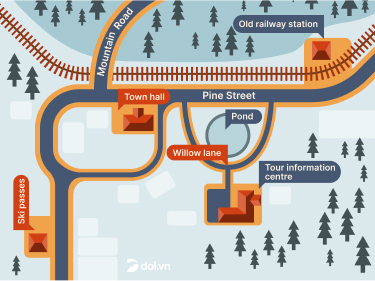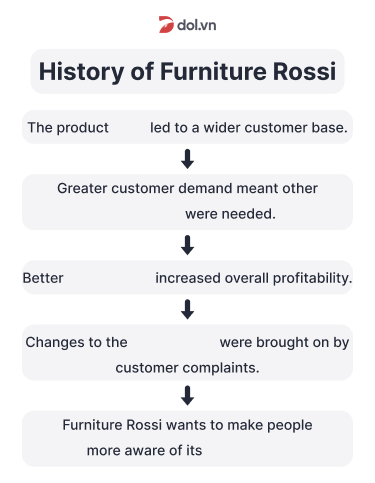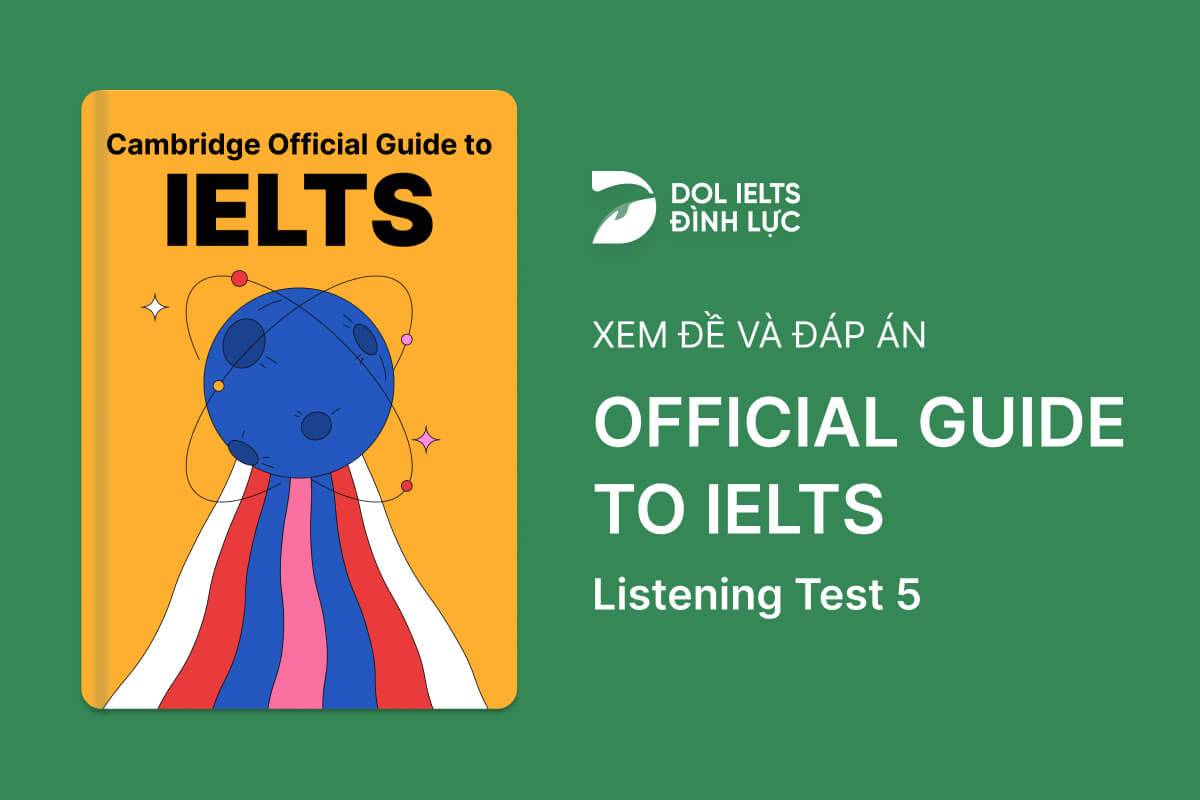Official Cambridge Guide To IELTS - Listening Test 5 With Practice Test, Answers And Explanation
Luyện tập đề IELTS Online Test Official Cambridge Guide To IELTS - Listening Test 5 được lấy từ cuốn sách Official Cambridge Guide To IELTS với trải nghiệm thi IELTS trên máy và giải thích đáp án chi tiết bằng Linearthinking, kèm answer key và list từ vựng IELTS cần học trong bài đọc.
Section
👂️ Bài nghe section 1
a set of
keys2
Some documents
A
in a box3
A blue
4
Date and time: 2.00-2.30pm on
❓ Tapescript section 1
🔥 Đáp án & giải thích section 1
Giải thích chi tiết
 Đáp án mình cần là mẫu mã của suitcase (black with thin .... stripes)
Đáp án mình cần là mẫu mã của suitcase (black with thin .... stripes)
=> Mình sẽ biết đáp án sắp tới khi nghe "Right, so, let's start with a description of the suitcase"
 Staff hỏi về màu sắc "How about the colour?"
Người phụ nữ trả lời "Yes - it's black but not exactly plain black - it has some narrow stripes down it, sort of grey. Actually - no, they 're white now I think about it"
Staff hỏi về màu sắc "How about the colour?"
Người phụ nữ trả lời "Yes - it's black but not exactly plain black - it has some narrow stripes down it, sort of grey. Actually - no, they 're white now I think about it"
=> Suitcase màu đen nhưng có sọc, lúc đầu người phụ nữ nhớ nhầm là sọc màu xám, nhưng chính xác hơn là màu trắng.
=> Đáp án là white 
Section
👂️ Bài nghe section 2

❓ Tapescript section 2
🔥 Đáp án & giải thích section 2
Giải thích chi tiết
Mình cần tìm vị trí của supermarket
=> Đáp án sẽ tới sau "If you want to get to the supermarket ...."
 Mình nghe được "....go right, that's the quickest way, and then turn right at the top of Willow Lake, and it's the second building you come to opposite the old raliway station"
Mình nghe được "....go right, that's the quickest way, and then turn right at the top of Willow Lake, and it's the second building you come to opposite the old raliway station"
=> Từ Willow Lane đi về bên phải, sau đó rẽ phải lần nữa tại Willow Lake, siêu thị là tòa nhà thứ hai mình gặp, đối diện với old railway station enter
=> Đáp án là G 
Section
👂️ Bài nghe section 3

❓ Tapescript section 3
🔥 Đáp án & giải thích section 3
Giải thích chi tiết
Mình cần nghe xem tại sao James làm case study đối với công ty Furniture Rossi
=> Đáp án sẽ tới sau "Well, as you know, Furniture Rossi..."
 Nghe thấy "Furniture Rossi is an Australian company"
Nghe thấy "Furniture Rossi is an Australian company"
=> Furniture Rossi là công ty Úc, không phải là công ty nước ngoài rebranded
=> Loại đáp án C 
 Nghe tiếp thấy "....it's got plans to expand into foreign markets. So I choose it for that reason."
Nghe tiếp thấy "....it's got plans to expand into foreign markets. So I choose it for that reason."
=> Công ty có kế hoạch phát triển ra thị trường quốc tế
=> Có kế hoạch thôi chú chưa enjoyed global success
=> Loại đáp án A 
 "It's going through a transition - it's a family-run business aiming to build a global brand"
"It's going through a transition - it's a family-run business aiming to build a global brand"
Section
👂️ Bài nghe section 4
evolution
31
humans often had large
.32
animals were common, but a
was always drawn from the side or from above.33
unlikely that contact through
resulted in similar artistic styles.34
firstly for reasons of
.35
later for social, spiritual and
reasons.36
❓ Tapescript section 4
🔥 Đáp án & giải thích section 4
Giải thích chi tiết
 Mình cần nghe xem rock art cung cấp bằng chứng về điều gì
Mình cần nghe xem rock art cung cấp bằng chứng về điều gì
=> Đáp án sẽ tới sau "rock art has a practical value for reasearchers" (có giá trị thực tiễn = bằng chứng)
 Nghe thấy "Secondly, rock art tells us about migration"
Nghe thấy "Secondly, rock art tells us about migration"
=> Rock art cho chúng ta biết thêm về sự di cư
=> Đáp án là migration 


